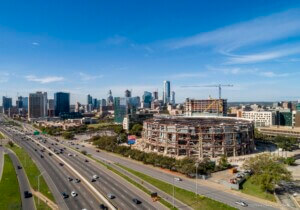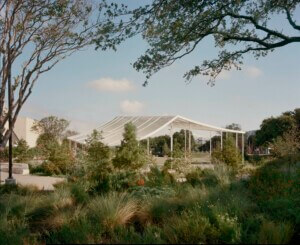The evening of April 14th was a big one for the East Austin community, when developers met with residents to unveil the master plan for the 208-acre lot of land known as Colony Park. Plans for the development were rolled out onto a community center floor as a giant map that enabled attendees to walk, step-by-step, through the five-year-plus initiative. The project hopes to bring commerce, parks, new residences, into a sustainable community.
Currently, the land is home to little more than cedar trees, with drifters and litterbugs capitalizing on the vast expanse of space. So in 2012, the Neighborhood Housing and Community Development (NHCD) department applied for a $3 million grant to revitalize the land. It’s a unique opportunity—rarely does the chance to build a neighborhood completely from scratch fall into the hands of developers. With great potential comes great responsibility, however, and the jurisdiction of how to utilize the land has caused friction in the surrounding neighborhoods.
Although the initiative’s leaders have continually stressed the importance of community involvement, dialogue between the planners and residents got off to a rocky start. The NHCD applied for the grant without notifying the Colony Park community. The competitive and rapid process involved in applying for and winning such grants shortchanged the initiative’s handle on time, explained NHCD’s president, but residents were understandably miffed at the oversight.
Their irritation at the communication breakdown spilled over into the planning of the zone. Colony Park, as it stands now, houses many elderly and fixed-income residents. These tenants are fearful of displacement and gentrification that new housing developments often instigate. Others voice trepidation over the idea that this project will contribute to sprawl—that it will be more difficult than planners are acknowledging to account for commerce. As it stands now, the community is removed from commercial space. It’s a difficult area to access, explained residents, bordered as it is by two interstates, with the nearest grocery store over a mile away.
But the initiative is actively striving to hear out these concerns and respond to them appropriately. 750 residential units will be built with the mixed-income community to prevent gentrification. Nearby residents from Agave are pulling for inclusion of urban farming opportunities, as well as farmers markets and more local business. Economic considerations are at the forefront of the discussion, and the plan offers an intriguing option of making provisions for a shared-car transportation program that will cut down on the cost of living for families.
As far as the initial lack of dialogue, the initiative is trying hard to make it up to Colony Park residents. In September, college students canvassed the area to speak with tenants about what they wanted in their community. A website acts as virtual forum, and the neighborhood has formed a team of leaders who voice their opinions on behalf of the community.
So what was featured in the master plan? Parks, 500 single-family ownership units and 250 multi-family rental units, on-site recycling and composting, and a mandate that all buildings meet or exceed SMART Housing Program standards for green development were all presented on Tuesday night. While community reactions were mixed, the tone was ultimately hopeful.










